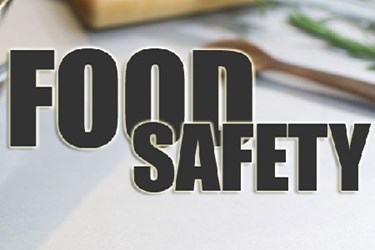3 Actions For Implementing A Food-Safety Plan
By Melissa Lind, contributing writer

A recent Food Marketing Institute meeting showcased three basic steps to implement safety recommendations for the produce industry. Though FMI intended the instructions to be for produce handlers in the retail market, they make an excellent starting point for other participants across the food supply chain.
In January of last year, FMI — in cooperation with the United Fresh Produce Association and the Produce Marketing Association — published Produce Safety Best Practices Guide for Retailers. These best-practice recommendations are well-thought out and should be implemented where needed throughout the fresh food supply chain. It holds particularly true for members who don’t yet have a good handle on a food-safety plan. The three first steps include:
Have A Written Food Safety Plan, No Matter What Your Size
To ensure both regulatory compliance and public safety, whether your organization is large or small, it needs to have a food-safety plan. This plan must be documented in writing and should include all of the relevant practices and standards that your organization needs to meet to ensure food safety within the company.
Whether it is transportation type, cleaning schedules, temperature monitoring, or training programs, your company’s objectives need to be clearly defined. The plan should include minimum and maximum specifications for measurements where relevant, clear communication plans, documentation methods, and emergency management practices. The plan obviously needs to be complete with all required documentation being up to date.
One of the bigger issues of the food industry, particularly within the cold chain, is the variation in member resources. Smaller vendors or suppliers may not have access to the same training or methods. However, as a food supply-chain participant, it may behoove you to share resources and information with those smaller vendors. Remembering that part of ensuring food safety is visibility in a "one-up, one-down" practice means that you need to ensure the food is safe and traceable from your vendor and to your customer. If they can’t meet your standards, consider sharing your plan.
Food Safety Extends Beyond Quality Assurance
Food safety is a company-wide issue with failures affecting everyone. A catastrophic failure in food safety can have far-reaching implications resulting in discipline and fines from regulating bodies, loss of customer confidence, loss of brand loyalty, and losses to the company’s bottom line.
Food safety is an issue that every employee, not just those is quality assurance, need to know about and play an active role in. Food-industry workers can no longer afford to have the QA department simply come around and check off a few boxes; your whole organization needs to be involved. When employees “buy in” to the plan, implementation becomes much easier.
Appointing A Project Leader
Despite company-wide involvement, one person needs to be appointed to manage the process of adopting and implementing a food-safety plan. Oftentimes, that person is an existing department manager, but it can be anyone with vested interest in the company. The size of your company may determine who the project lead should be and how much time they will have to devote to it.
The food-safety plan is not a small issue. In addition to ensuring that your firm can meet requirements of FSMA, it is entrusted to protect public safety. A single food-safety plan failure can cost your company far more in terms of lost business and recall expenditures than it can ever cost to implement and manage a robust, food-safety plan.
